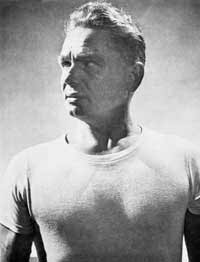 (physical trainer, was born near Düsseldorf, Germany. His exact date of birth and the full names of his parents are unknown. His father, a champion gymnast, was Greek; his mother, who was German, worked as a naturopath. The family name, of Greek origin, is pronounced “Puh-lah-tees” and was derived from its original version, Pilatu. As a child, Joseph Pilates suffered from a variety of ailments, including asthma, rickets, and rheumatic fever, and was bullied by other boys who made fun of his name, calling him “Pontius Pilate, killer of Christ.” Determined to improve his spindly physique as well as his self-esteem, he became obsessed with bodybuilding, gymnastics, and the practice of yoga. (physical trainer, was born near Düsseldorf, Germany. His exact date of birth and the full names of his parents are unknown. His father, a champion gymnast, was Greek; his mother, who was German, worked as a naturopath. The family name, of Greek origin, is pronounced “Puh-lah-tees” and was derived from its original version, Pilatu. As a child, Joseph Pilates suffered from a variety of ailments, including asthma, rickets, and rheumatic fever, and was bullied by other boys who made fun of his name, calling him “Pontius Pilate, killer of Christ.” Determined to improve his spindly physique as well as his self-esteem, he became obsessed with bodybuilding, gymnastics, and the practice of yoga. 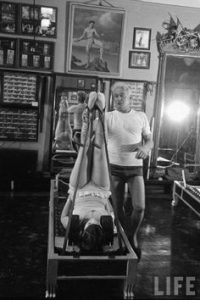 By the age of fourteen he had become so physically fit that he was hired to pose for anatomical charts. Pilates attributed the dramatic turnaround in both his health and his physical appearance to proper breathing techniques and correct posture, and he devised a series of exercises to maintain the well-being he had fought so hard to gain. By the age of fourteen he had become so physically fit that he was hired to pose for anatomical charts. Pilates attributed the dramatic turnaround in both his health and his physical appearance to proper breathing techniques and correct posture, and he devised a series of exercises to maintain the well-being he had fought so hard to gain.
Working in partnership with his wife, Pilates opened a gym, which he referred to as his “studio,” at 939 Eighth Avenue, on the city’s West Side. The neighborhood also had several dance studios, and soon he was attracting a clientele that included ballet company members as well as actors and athletes. As word spread of his teachings’ effectiveness, laypersons seeking to improve their physical well-being also enrolled in his classes, prompted by a growing popular interest in so-called “physical culture” during the 1920s. Over the years Pilates trained some of his students to become teachers of his method; those who adhered strictly to his teachings became known as the “Pilates Elders” and practiced what became known as “Classical Pilates.” Other Pilates-trained teachers refined and altered his techniques to their own liking, incorporating elements of other fitness disciplines.
In private life Pilates was known as a gregarious party lover who nevertheless managed his diet carefully. His only weakness was a lifelong addiction to cigar smoking, which is believed to have caused an ultimately fatal case of emphysema; he died in a New York hospital. Clara Pilates continued to run the West Side studio for ten years, and Pilates-trained practitioners carried his teachings to other centers throughout the country. The method remained a largely exclusive practice, followed by dance and acting professionals, top-flight athletes, and socialites, until the 1990s, when it began attracting a wider following among the general public–specifically so-called “baby-boomers,” persons born during the postwar years who were now entering middle age and becoming increasingly fitness-conscious. The Pilates craze that ensued had been predicted by Pilates himself, who often expressed the belief that he was fifty years ahead of his time. As of 2008 there were Pilates studios throughout the world, more than five hundred in the United States alone, and celebrities and unknowns alike attested to the method’s usefulness in strengthening and slimming their bodies. |
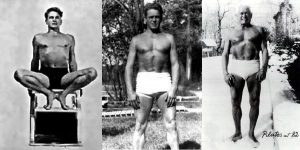 As a young man Pilates variously earned a living as a self-defense trainer, a boxer, and a circus performer in Germany and later in England, where he emigrated in 1912. Two years later, following the outbreak of World War I, he was classified as an enemy alien by the British government and was sent with other German nationals to the Isle of Man, in the Irish Sea. He was interned there for the duration of the war. To pass the time, he began teaching fitness exercises to other inmates. He devised special programs for those who were bedridden and created makeshift devices for strength training.
As a young man Pilates variously earned a living as a self-defense trainer, a boxer, and a circus performer in Germany and later in England, where he emigrated in 1912. Two years later, following the outbreak of World War I, he was classified as an enemy alien by the British government and was sent with other German nationals to the Isle of Man, in the Irish Sea. He was interned there for the duration of the war. To pass the time, he began teaching fitness exercises to other inmates. He devised special programs for those who were bedridden and created makeshift devices for strength training.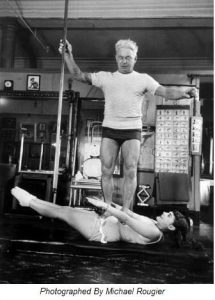 Following his release at the war’s end in 1918, Pilates returned to Germany to work as a fitness trainer in Hamburg. The routines and machinery that he fashioned on the Isle of Man became the basis for what became known as the Pilates Method, the fitness program that he began to develop and refine during the postwar years. Word of his success with individual clients spread, and he was hired by the city of Hamburg to train its policemen. His techniques were also adopted by the German army. However, worsening economic conditions in Germany prompted Pilates to consider emigration yet again, and in 1925 he sailed for the United States. On board the ship he met a woman named Clara, who shared his interest in physical fitness. A romance developed, and they were married soon after their arrival in New York City.
Following his release at the war’s end in 1918, Pilates returned to Germany to work as a fitness trainer in Hamburg. The routines and machinery that he fashioned on the Isle of Man became the basis for what became known as the Pilates Method, the fitness program that he began to develop and refine during the postwar years. Word of his success with individual clients spread, and he was hired by the city of Hamburg to train its policemen. His techniques were also adopted by the German army. However, worsening economic conditions in Germany prompted Pilates to consider emigration yet again, and in 1925 he sailed for the United States. On board the ship he met a woman named Clara, who shared his interest in physical fitness. A romance developed, and they were married soon after their arrival in New York City.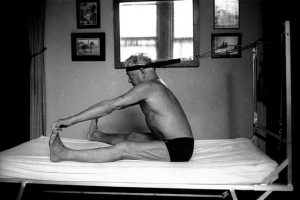 The Pilates Method–in its early years it was called Contrology–was grounded in a series of exercises that called for stretching, pulling, and contracting parts of the body to strengthen muscles in the abdomen and pelvic area and to foster proper spinal alignment, while simultaneously practicing rhythmic breathing. Some of the exercises, which had such names as the Corkscrew, Hot Potato, and Can Can, were done on the floor; others, such as the Cadillac, the Barrel, and the Reformer, involved the use of simple machines that Pilates designed. The Pilates Method was demanding and the training was expensive, which meant that devotees had to be committed to its practice. Pilates’s students thus formed a rather exclusive club that over the years included the celebrated dancers and choreographers
The Pilates Method–in its early years it was called Contrology–was grounded in a series of exercises that called for stretching, pulling, and contracting parts of the body to strengthen muscles in the abdomen and pelvic area and to foster proper spinal alignment, while simultaneously practicing rhythmic breathing. Some of the exercises, which had such names as the Corkscrew, Hot Potato, and Can Can, were done on the floor; others, such as the Cadillac, the Barrel, and the Reformer, involved the use of simple machines that Pilates designed. The Pilates Method was demanding and the training was expensive, which meant that devotees had to be committed to its practice. Pilates’s students thus formed a rather exclusive club that over the years included the celebrated dancers and choreographers 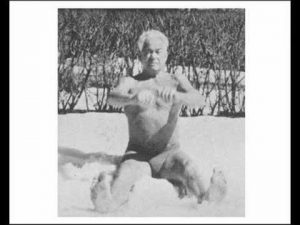 Pilates wrote several books about his method, including Your Health: A Corrective System of Exercising that Revolutionizes the Entire Field of Physical Education (1934) and Return to Life Through Contrology (1945; repr. 2005), the latter coauthored with William John Miller. He also patented more than two dozen exercise devices.
Pilates wrote several books about his method, including Your Health: A Corrective System of Exercising that Revolutionizes the Entire Field of Physical Education (1934) and Return to Life Through Contrology (1945; repr. 2005), the latter coauthored with William John Miller. He also patented more than two dozen exercise devices.